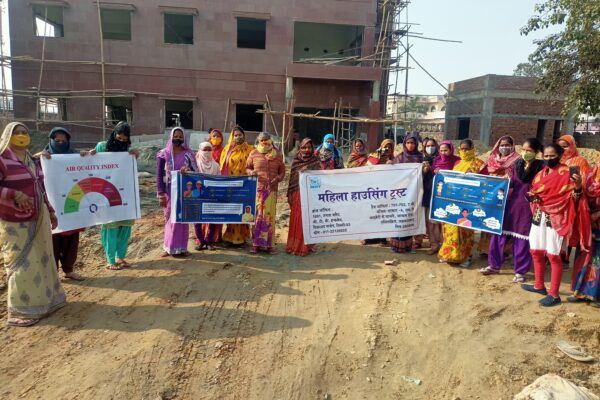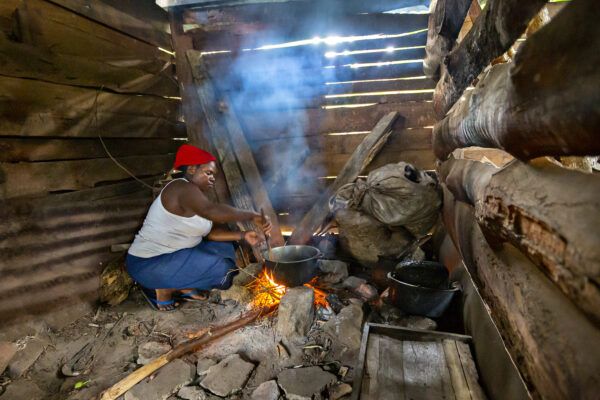Black women are nearly four times more likely to face maternal mortality during pregnancy and encounter twice the rate of stillbirth compared to white women in the UK, alongside numerous other maternal and reproductive health inequalities.
These disparities are mirrored in the United States, Australia’s Aboriginal and Torres Strait Islander communities, and in Africa, where an astonishing 70% of all maternal mortalities occur despite it not being the most populous continent. We also observe glaring inequalities in child health.
3.7x Black women are 3.7 times more likely to die during pregnancy than white women
2x Black women are twice as likely to have a stillbirth compared to white women
The missing link
A noticeable lack of Black-led research projects and research organisations in the field of Black maternal health perpetuates these inequalities, reinforcing biases, and amplifying harm. Global Black Maternal Health emerged with a mission to empower black communities, giving them agency in shaping their health narratives, a voice that has been largely absent in the current research landscape. Our aim is to bring about profound insights and transformative change.
The “Black Child Clean Air” initiative was born out of the realisation that, despite existing reports linking air quality to adverse pregnancy outcomes, there seemed to be a missing link in discussions surrounding the environmental factors contributing to the Black maternal health crisis. This is particularly significant as cardiovascular heart disease, a key contributor to maternal mortality, is linked to toxic air.
Acknowledging the environmental sector’s lack of diversity, especially at senior levels, the Black Child Clean Air report amplifies the voices of Black women, who face disproportionate exposure to illegal levels of air pollution but are often excluded from conversations around clean air and the health impacts of climate change.
Listening to voices previously unheard in research
The report has unveiled several critical findings that underscore the urgency of addressing this issue.
I am very concerned about the long- term impact of air pollution regarding my 3-year-old. I do constantly wonder if living on a main road and working in the city whilst pregnant contributed to him having suspected asthma.
Research participant
Firstly, there’s a notable lack of awareness among Black pregnant women and mothers about the detrimental effects of air pollution on pregnancy outcomes and child health. Empowering these women with knowledge is essential, enabling them to demand better protection from policy makers and make informed decisions about air pollution exposure.
17% of mothers knew nothing at all about the impact of air pollution on their own health
58% of mothers knew nothing about the impact of air pollution on the health of an unborn baby
While being pregnant I was worried that if pollution was affecting my health, then it would definitely affect my baby and I ended up having her at 33 weeks 4 days.
Research participant
The evidence showcased in the report demonstrates the eagerness of Black mothers and pregnant women to receive education on these matters, as they actively seek to protect their well-being and that of their children.
Addressing this awareness gap is pivotal, as environmental factors significantly contribute to negative birth outcomes, offering a pathway to bridging the disparity gap within the ongoing Black maternal health crisis.
A message to policy makers
While some individuals can make small changes around their exposure to air pollution, the responsibility largely lies on governments, policy makers and private sector organisations to prioritise clean air. I urge these organisations to recognise the critical social and racial justice implications stemming from the lack of awareness and disproportionate exposure to air pollution faced by Black women and children in London and beyond.
Policy changes are essential to address these disparities and create a healthier environment for all. By supporting initiatives that promote clean air and ensuring diverse voices contribute to policymaking, the lives of countless families will be meaningfully improved.
An inclusive path forward
The battle for cleaner air is not solely an environmental concern; it is a matter of social justice, racial justice, and equity. The “Black Child Clean Air” report shines a spotlight on the urgent need for intersectional approaches in environmental advocacy. By highlighting the unique challenges faced by Black mothers and children, we aspire to foster a more inclusive and diverse environmental sector that delivers clean air for all.
Stakeholders in healthcare, environmental advocacy and policymaking need to collaborate on bridging the knowledge gap and crafting effective solutions. Addressing the Black maternal health crisis through an environmental lens is a collective responsibility. By elevating awareness, supporting informed decision-making, and advocating for policy changes, we can genuinely make a difference in the lives of many.
Our work concerning clean air equity doesn’t have a fixed start or end; it’s the genesis of a global body of work ensuring that those disproportionately exposed to toxic air have their voices heard at the highest levels, which is why we will be expanding our work to the African continent.

